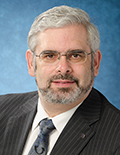Page Content
Take down those cats and take out those bats
 So it’s mid-September and you still haven’t gotten around to putting up all those inspirational cat posters in your classroom? Or have you already been sorely tempted to whack little Jason (it’s always a Jason) upside the head? Don’t worry, science has your back!
So it’s mid-September and you still haven’t gotten around to putting up all those inspirational cat posters in your classroom? Or have you already been sorely tempted to whack little Jason (it’s always a Jason) upside the head? Don’t worry, science has your back!
In fact, the August 2014 edition of Scientific American is chock full of research findings that anxious parents, ambitious superintendents and ardent education reformists will want to embrace. According to Barbara Kantrowitz, the author of “The Science of Learning,” scientists are bringing “new rigor to education research” using “tools borrowed from medicine and economics to figure out what works best in the classroom.” But, they lament, “the results aren’t making it into schools.” (http://bit.ly/1pMR8bZ).
For example, misguided elementary teachers still insist on covering the walls of their classrooms (and sometimes floors and ceilings too) with posters, art, student projects, maps and more, all in hopes of creating a cheerful and stimulating learning environment. However, in a carefully designed experiment, Anna Fisher and Karrie Godwin of Carnegie Mellon University demonstrated that classes of 12 (!) kindergarteners who were consigned to a room stripped bare of decoration were more likely to pay attention and score higher on comprehension tests when read science stories by their teacher than those who were placed in a more typically festooned classroom.
So, not only should teachers not put up those cat posters, they should strip the walls and whitewash the windows. Nothing like a little benign sensory deprivation to get those five-year-olds to focus on the core learning outcomes of The Very Hungry Caterpillar.
And we can anticipate even more revelations as new methodologies are used to examine what students and teachers do in the classroom. For example, researchers are moving beyond just measuring learning outcomes; they are turning to “multi-modal learning analytics” based on measurements of students’ eye gaze, galvanic skin response and exchanges with other students. My experience teaching typical Grade 8 students suggests that if they’re going to track that sort of data, scientists will want equipment that has dials that go all the way to 11.
But the most promising approach to improving student learning is suggested by another article in the issue, “Accidental Genius” (http://bit.ly/1pQWrub, see also http://bit.ly/1osJPEg). In this article, Dr. Darold A. Treffert describes several cases of “acquired savant syndrome”—instances where ordinary individuals suddenly develop extraordinary skills following a brain injury.
One child who suffered a serious fall at age three became able to sculpt startlingly realistic representations of animals using vegetable shortening. Another nine-year-old who was shot in the head was suddenly endowed with superior mechanical aptitudes. Still another boy, who at age 10 was knocked unconscious by a baseball, “discovered afterward that he could bring to mind the exact day of the week for any date after the accident and could remember the weather for each day since the trauma as well.”
Now I know what you’re thinking but, just to be clear, Dr. Treffert doesn’t actually advocate bonking children on the head in order to unleash their latent genius [Ed: Neither does ATA Member Services]. This lapse I ascribe to the good doctor’s natural timidity and possible fear of litigation. That said, I have no doubt that there are education reformers out there who would gladly take ball-peen hammers to kids’ craniums if that’s what it took to raise standardized test scores.
So to you stick-in-the-mud teachers I say, be sure to uncritically embrace and implement every research revelation that comes your way—the guys in white coats clearly know better than you and, after all, what’s the worst that could happen? ❚
Dennis Theobald is the ATA’s associate executive secretary.
